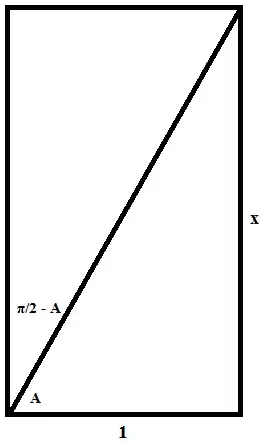This question has two parts, I've done the first but I don't understand that second.
a. Show that $arctan(\frac{1}{2})+arctan(\frac{1}{3})=\frac{\pi}{4}$
b. Hence, or otherwise, find the value of $arctan(2)+arctan(3)$.
The mark scheme has a few methods to solve this, and I don't understand this one in particular.
$**arctan(2)+arctan(3)=\frac{\pi}{2}-arctan(\frac{1}{2})+\frac{\pi}{2}-arctan(\frac{1}{3})**$
$=\pi-(arctan(\frac{1}{2})+arctan(\frac{1}{3}))$
$=\pi-\frac{\pi}{4}=\frac{3\pi}{4}$
I don't understand the line that I asterisked. Where does the $\frac{\pi}{2}$ and $arctan(\frac{1}{2})+arctan(\frac{1}{3})$ come from? Please could someone explain all of this to me?
